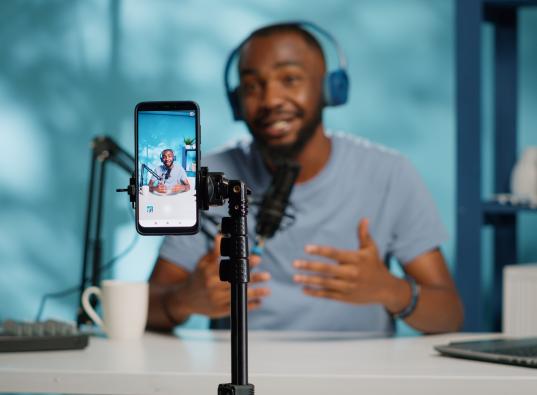Few of us need a séance with a crystal ball to forecast that mobile will account for an even larger portion of South African website visits during 2017. The trend’s been upon us for a while now and continued to accelerate in 2016 - Effective Measure’s monthly web traffic reports showing mobile’s share of unique browsers growing from 54% in January to some 64% by the end of the year.
Yet for all the opportunity this growth (which is largely driven by a new, previously unconnected, audience) presents to businesses, it seems a sense of complacency has taken hold among South African website owners, impacting their ability to efficiently monetise mobile traffic.
While many commentators laud the growth of ecommerce in this country, the reality is that it only accounts for around 1% of total retail spend – way behind the 10% plus seen in the US and Europe.
Although there are many plausible theories explaining South Africa’s sluggish adoption of online shopping - challenges with fulfilment, a lingering fear over the security of our data and a lack of credit cards (more on that later) - I’d posit that a pretty substantial contributor is the poor experience most brands and retailers present their cellphone bearing clientele.
And this manifests itself in two distinct failings: shoddily built websites; and a blinkered view on conversion.
Shoddy web builds
A couple of years ago Google caused huge consternation with its announcement that it would favour websites offering a strong mobile browsing experience when determining its organic search listings. Mobilegeddon rolled out on 21 April 2015 and while it undoubtedly accelerated the adoption of responsive web design, the subsequent actions of many web owners could be likened to slapping a coat of lipstick on a pig: they may have have updated their style sheets to better render information on small screens, but they didn’t bother to sort out many of the fundamentals that would improve mobile browsing.
A study Rogerwilco ran late last year into the mobile readiness of South Africa’s top 50 ecommerce sites found the average page speed rating (as defined by Google’s PageSpeed Tools) was just 59%. Ironically, one of the sites offering the fastest and best experience was the recently deceased Groupon.
For the most part, sites are slow because they contain large images designed for desktop display, make an excessive number of database calls and require their servers to gather all page content before displaying anything to a visitor instead of layering the loading of information.
While none of these are particularly difficult to fix, they matter. Enormously.
The cost of acquisition
Page load speed plays a key role in acquiring web traffic. Not only does Google reward well structured sites with prominent visibility in organic results – a trend that will grow according to Search Engine Land – but it also uses the metric as one of the factors in determining the bid price advertisers pay to flight their ads. A fast site is thus more likely to attract natural search traffic and will be easier on the pockets of advertisers.
Converting clicks to cash
Research by US-based SOASTA revealed the rather obvious truth that the faster a page loads on a mobile device, the higher the conversion rate (a 2.4 second load speed for a mobile web page equated to a 1.9% conversion rate – not far from the 2-3% typically seen for desktop conversion). But the researchers found that when mobile load speed fell to 4.2 seconds or slower, conversion dropped below 1%. Proving that it pays to pay attention to style sheets.
Understanding the audience
As well as addressing the fundamentals of good site design and architecture, there’s something else brands – even those who don’t retail direct to the public - can do to better exploit mobile web traffic. And that’s to break the shackles of our relatively conventional thinking around ecommerce by adapting to meet the constraints of their audience.
Mobile has opened the internet to an ever widening array of South Africans, many of whom exist in the informal economy and may not have access to the payment methods most of us marketers take for granted.
But the lack of a credit card shouldn’t be seen as an obstacle to conversion. There are other ways brands can use their sites to drive purchase behavior. Online engagement can, for example, be rewarded with coupons that can be redeemed in physical retail outlets - an action that can directly correlate point of sale purchase with digital activity.
And this is where I hope we’ll see an explosion of interest in mobile marketing for 2017.
Note: this article first appeared in my column on MarkLives
Need Assistance with Digital Strategy?
Rogerwilco’s team of strategists, business analysts and data scientists is here to help.





